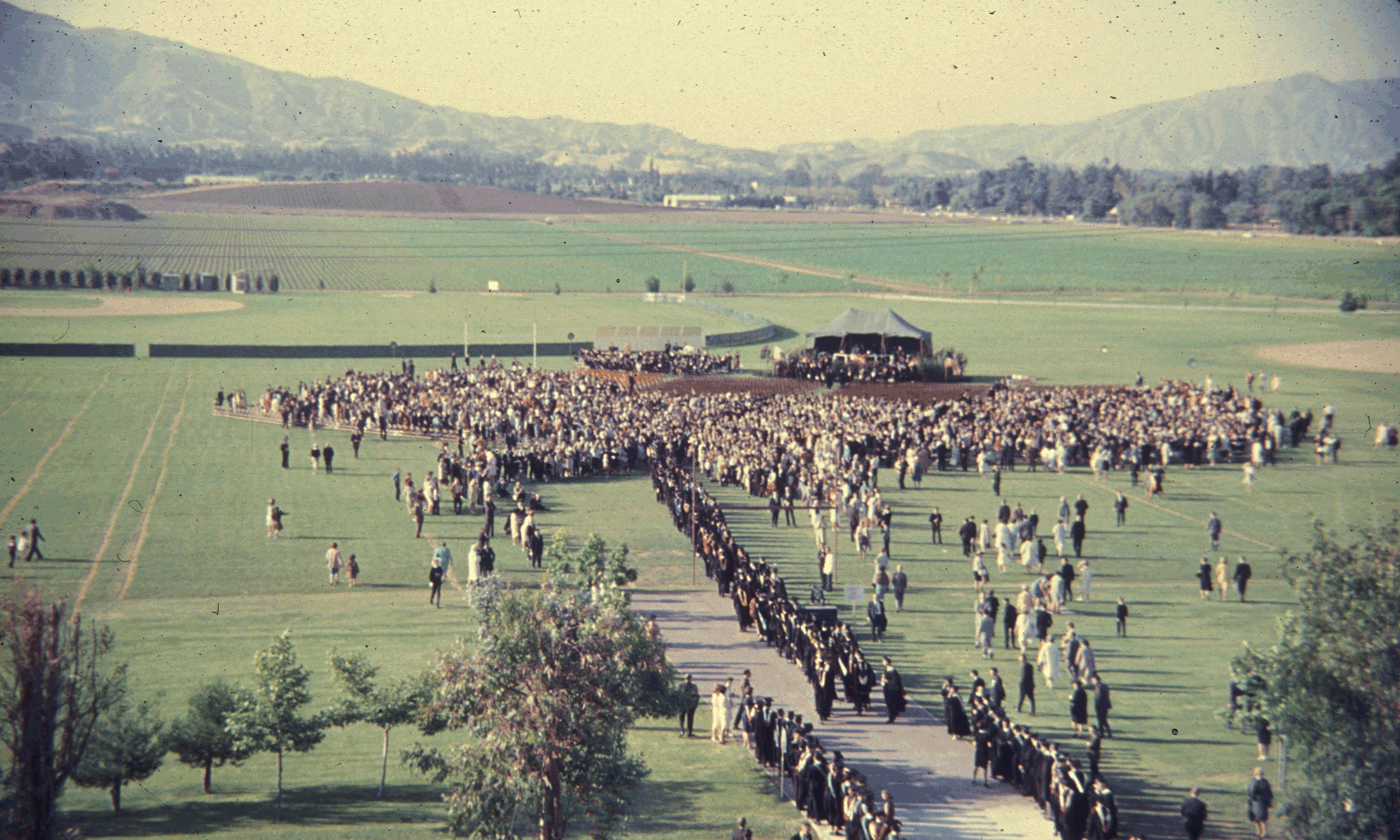I was a graduate student at USC [University of Southern California], and a guy named Phil Monroe, who was a professor of Physical Education, asked me to come out and interview for — amazingly– the baseball coach’s job. Because I’d played professional baseball with the New York Yankees. Meanwhile, I was working on my doctorate at USC in Counseling/Psychology, and then I get offered this job as the baseball coach. So I consulted with my advisor at USC, and he said “Well, it’s a professorship. That’s hard to get — so, take it if you can, and then later maybe, you can switch over.” Well, that’s exactly what happened. I was a coach, and I taught Physical Education for five years, and then they needed me in the Educational Psychology department, and I switched over.
…
Dr. Prator used to come to the Physical Education building to work out. He was the President, and I’d run into him there because he’d be in the faculty dressing room and we’d talk, and talk, and I got to know him fairly well. When it came to the point that they said, “Well, we only have fifteen Latinos on the whole campus, a dozen Blacks on the whole campus, [so] we’re going to try to recruit minorities,” [Prator said] “Stan, I’d like you to be the first EOP [Educational Opportunity Program] Director, because students get along well with you, and you understand them.” I mean, I had a good relationship with the students. He said, “I know you don’t know much about the other aspect of it, but maybe we can do that.”
So what I did was, I called in Miguel Verdugo – Mike Verdugo, who was head of what they called UMAS at that time – United Mexican American Students; and I called in Archie Chatman, who was head of the BSU, the Black Student Union. And I said, “You guys go out and find students – I don’t know how to find them.” [They asked,] “What are the criteria?” [I answered] “Bring them over, and we’ll see.” The interesting thing to me was, we brought kids in who were failing in the eleventh grade, and then all of a sudden got As and Bs in the twelfth. Their overall grade-point average wouldn’t have permitted them to get in here, but we saw something in them. They must have had a terrible eleventh grade year – you know, maybe trouble in their family, maybe a loss, maybe jail – who knows what? So we looked for people who showed some little glimmer of promise. And that first year we brought in 123 Blacks and Latinos – mostly Black students – all from Central LA, or Sylmar, or San Fernando.
On November 4, 1968, a group of black athletes and Black Student Union activists at SFVSC seized the sixth floor of the Administration Building seeking demands for educational reform and an end to perceived racism in the Athletic Department. Dr. Charnofsky was EOP Director at the time, and witnessed these events. A extensive account is given in John Broesamle’s book, Suddenly a Giant.
After the takeover in November of 1968, the campus was pretty disrupted for several weeks, and there were other incidents around the campus : they broke a door in the administration building at one protest, and there were other arrests made after that. But what happened was, they brought in ministers from South Central LA – Black ministers– they brought in Latino, Chicano men – and a couple of women too, I think– I don’t think Delores Huerta was around yet then – but Cesar Chavez’s people – people like that came in, and they all wanted to try to ameliorate the situation. “How can we get this to work? How can we have this thing work?”
…
The demonstrations were unfortunate, but sometimes power is the only– You show power is the only way you fight power. The power structure doesn’t give up power voluntarily, in any situation – very rarely. [It’s not] “Oh, you want something? We’ll give it to you.” You know– they’ve got to feel pressure. So that’s what happened. And I think the best thing was, we have a diverse campus. We have campus of diversity. My own Master’s program now – we have people from all over the world that come here. We have a lot of Muslims, we have middle-easterners, Israelis, Iranians, Iraqis, Russians, a lot of Armenians. We have people from all over, everywhere, that come to our program now. I know that’s not the cause and effect — but because we have an open campus, people are attracted to us. So we have a very diverse campus, which I really like.


